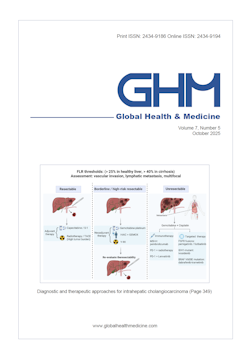Global Health & Medicine 2023;5(2):106-111.
Association between SARS-CoV-2 anti-spike antibody titers and the development of post-COVID conditions: A retrospective observational study
Miyazato Y, Tsuzuki S, Matsunaga A, Morioka S, Terada M, Saito S, Iwamoto N, Kutsuna S, Ishizaka Y, Ohmagari N
The symptoms that persist after an acute coronavirus disease 2019 (COVID-19) are referred to as post- COVID conditions. Although the cause of post-COVID conditions remains unclear, the host immune response to SARSCoV- 2 may be involved. Hence, we aimed to investigate the effect of serum antibody titers against SARS-CoV-2 on the development of post-COVID conditions. We conducted a retrospective observational study of COVID-19-recovered individuals who attended the clinic at the National Center for Global Health and Medicine between January 2020 and April 2021. Serum SARS-CoV-2 anti-spike antibody titers were measured and a questionnaire survey was used to collect information on the presence of post-COVID conditions and demographic characteristics of the participants. Participants were then divided into two groups: high peak antibody titer group [≥ 0.759 OD450 value], and low peak antibody titer group [< 0.759 OD450 value] and compared their frequency of post-COVID conditions. Of 526 individuals attending the clinic, 457 (86.9%) responded to the questionnaire. We analyzed the data of 227 (49.7%) participants with measurements of serum antibody titers during the peak period. The incidence of depressed mood was significantly higher in the group with higher antibody titers (odds ratio: 2.34, 95% CI: 1.17–4.67, p = 0.016). There was no significant difference in the frequency of the remaining symptoms between the two groups. Among post-COVID conditions, the depressed mood was more frequent in the group with high serum antibody titers which suggests a difference in pathogenesis between depressive mood and other post-COVID conditions that requires further investigation.
DOI: 10.35772/ghm.2022.01070







